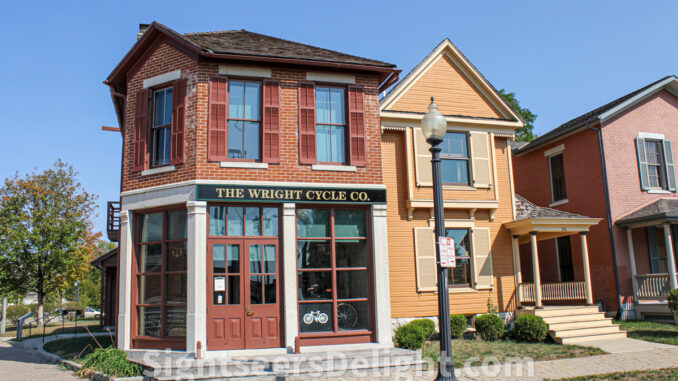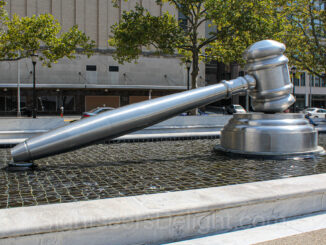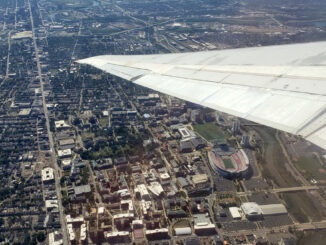
DAYTON, Ohio — In the early years of the 20th century, the Wright Brothers developed a flying contraption that forever changed how people travel.
But, years before Wilbur and Orville Wright traveled to Kitty Hawk, N.C., to test their airplanes, they were accomplished bicycle builders.
The brothers invented or further developed a number of innovations for bicycles. Among them: the self-oiling hub and the left-side pedal with left-hand threads, a change that prevented the pedal from unscrewing while cycling.
Despite these innovations, the brothers are more remembered for their aeronautical innovations. Today, their Dayton hometown is staking its claim as the “Birthplace of Aviation.”
Between 1895 and 1897, the Wright Brothers rented a shop at 22 South Williams St. in Dayton; it was the fourth location they occupied and helped them earn enough money to begin experimenting. Today, the building, the only former Wright bicycle shop location on its original foundation and in its original location, is part of the Dayton Aviation Heritage National Historical Park.
Their fifth shop at 1127 West Third Street, which they occupied between 1897 and 1908 and where they started building flying machines, was moved by Henry Ford to Greenfield Village in Dearborn, Mich., in 1937. The brothers also operated at Wright & Wright, Job Printers, from 1890 to 1895 on the second floor of the Hoover Block.
Orville Wright’s last workshop was torn down in the 1970s to make way for a gas station that was never built. But, a small park that includes a statue of Orville Wright looking at a propellor was built on the site, located on Broadway Street north of West 3rd Street and within walking distance of 22 South Williams St.
In addition to the South Williams Street cycle shop, the park is home to the Paul Laurence Dunbar State Memorial dedicated to the famous late 19th and early 20th century poet; Hawthorn Hill, the house in nearby Oakwood where Orville Wright lived from 1914 until 1948; the Wright Brothers Aviation Center at Carillon Historical Park in Dayton; and Huffman Prairie Flying Field.
While many people know the brothers traveled to Kitty Hawk, N.C., between 1900 and 1903 to test their flying machines, Huffman Prairie Flying Field is particularly remarkable. This 84-acre patch of pasture in nearby Fairborn is the precise location where the Wright Brothers made roughly 150 test flights in 1904 and 1905.
While the pasture, located at the end of a Wright-Patterson Air Force Base runway, may not look like much today, the field does include a reproduction of the brothers’ 1905 hangar and also a catapult they used to launch planes. The coordinates where the brothers circled their flying machines are also marked.
The location in 1990 was designated a National Historic Landmark. In 2008, it was also added to the U.S. World Heritage Tentative List with the hopes it will be listed as a UNESCO World Heritage Site.
As part of its Pioneers of Flight exhibit, the National Museum of the United States Air Force, also located in Dayton, includes information about and artifacts that belonged to the Wright Brothers. The museum includes a replica of the Wright Model A, which the brothers produced starting in 1906.
The original Wright Military Model A plane, which was purchased by the U.S. Army Signal Corps, is on display at the National Air and Space Museum in Washington.





